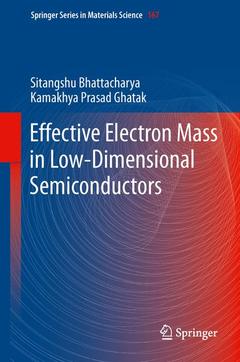Description
Effective Electron Mass in Low-Dimensional Semiconductors, 2013
Springer Series in Materials Science Series, Vol. 167
Authors: Bhattacharya Sitangshu, Ghatak Kamakhya Prasad
Language: English
Subjects for Effective Electron Mass in Low-Dimensional Semiconductors:
Approximative price 158.24 €
In Print (Delivery period: 15 days).
Add to cartPublication date: 11-2014
536 p. · 15.5x23.5 cm · Paperback
Approximative price 158.24 €
In Print (Delivery period: 15 days).
Add to cartPublication date: 10-2012
536 p. · 15.5x23.5 cm · Hardback
Description
/li>Contents
/li>Biography
/li>Comment
/li>
The book is written for post graduate students, researchers and engineers, professionals in the fields of solid state sciences, materials science, nanoscience and technology, nanostructured materials and condensed matter physics.
Born in India in 1953.Professor K. P. Ghatak obtained his B.E degree in Electronics and Telecommunication Engineering in 1974 from the then Bengal Engineering college Shibpur(Presently Bengal En
Provides a treatment of the effective electron mass in nanodevices
Explains changes of the band structure of optoelectronic semiconductors by intense electric fields and light waves
Gives insight into the electronic behavior in doped semiconductors and their nanostructures
Supports tuition by 200 open problems and questions
Includes supplementary material: sn.pub/extras




